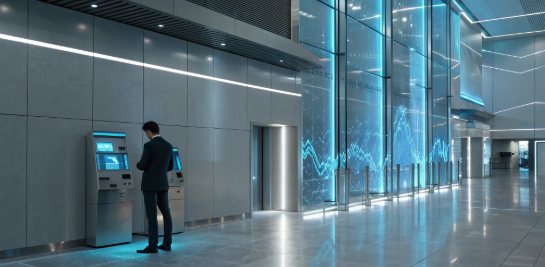Adopting AI in your hiring process is like hiring a brilliant but extremely literal-minded assistant. It can perform tasks with incredible speed and precision, but it needs very clear instructions and high-quality information to work effectively. If you give it messy data or vague commands, it will produce flawed results without a second thought. This is the core of many AI staffing challenges: learning how to manage this powerful new resource. You must teach it what fairness looks like, ensure it has clean data to work with, and integrate it smoothly into your team's workflow. This guide will teach you how to be a great manager for your AI, helping you avoid common mistakes and build a system that truly supports your goal of finding exceptional talent.
Key Takeaways
- Let AI Handle the Heavy Lifting: Use AI for repetitive, data-driven tasks like resume screening and scheduling. This frees up your team to focus on what humans do best: building relationships, assessing soft skills, and creating a great candidate experience.
- Prioritize Fairness and Transparency: Actively manage the risk of bias by auditing your data and continuously monitoring your AI's performance. Be transparent with candidates about how you use AI to build trust and create an equitable process.
- Create a Strategic Implementation Plan: Don't just buy software; build a strategy. Define clear goals, choose tools that solve your specific challenges, and measure your success with concrete metrics to ensure your AI investment delivers real value.
What is AI's Role in Recruitment?
Artificial intelligence is reshaping how companies find and hire talent. Instead of replacing recruiters, AI acts as a powerful assistant, automating repetitive tasks and providing data-driven insights. This shift allows hiring teams to focus on what matters most: building genuine connections with candidates. When used thoughtfully, AI can make the entire recruitment process faster, more efficient, and more equitable for everyone involved. By understanding how these tools work, you can better prepare your organization to use them effectively.
How AI in Staffing Has Evolved
Not long ago, recruiting was an entirely manual process, filled with stacks of paper resumes and endless spreadsheets. AI has changed the game by introducing automation and intelligence into the workflow. The evolution started with simple keyword scanners and has grown into sophisticated systems that can analyze, predict, and streamline hiring. According to Korn Ferry, this technology is making the hiring process significantly faster and more productive. This isn't about replacing human judgment but augmenting it, freeing up recruiters from tedious administrative work so they can focus on strategic relationship-building and finding the perfect fit for their teams.
How Companies Use AI Today
Today, companies use AI to manage some of the biggest challenges in staffing. AI-powered tools can sift through thousands of applications in minutes, identifying top contenders based on skills and experience. They excel at matching candidates to the right roles, improving the quality of shortlists. As noted by Staffing Hub, AI helps with everything from sourcing candidates across social media to planning for future workforce needs. These modern hiring solutions allow teams to move faster and make more informed decisions, ultimately creating a better experience for job seekers and saving valuable resources.
The Pros and Cons of AI in Hiring
While AI offers incredible advantages, it’s not without its challenges. A primary concern is the potential for bias. If an AI system is trained on historical hiring data that contains human biases, it can learn and perpetuate those same unfair patterns. This could lead to qualified candidates being overlooked for the wrong reasons. On the flip side, when implemented correctly, AI can actually help reduce human bias. By focusing on objective criteria like skills and qualifications, AI can promote fairer hiring practices and help build more diverse teams. The key is to be aware of the risks and actively work to prevent bias in your AI-driven processes.
What Are the Key Challenges of Using AI in Staffing?
Adopting AI in your recruitment process can feel like getting a major upgrade. It promises to speed things up, find better candidates, and make your team more efficient. While AI tools can certainly deliver on these promises, they aren't a simple plug-and-play solution. Implementing them effectively means being aware of the potential hurdles so you can plan for them from the start. Think of it less like flipping a switch and more like learning to work with a powerful new team member who needs clear direction to perform at its best.
The main challenges aren't always technical; they often involve your data, your existing processes, and your people. From making sure your new AI tools can actually talk to your current HR systems to ensuring the process remains fair and unbiased, there's a lot to consider. You also have to think about data security, legal compliance, and whether the investment will truly pay off in the long run. Facing these issues head-on is the key to building a successful AI-powered recruitment strategy that not only works but also builds trust with both your hiring team and your candidates. By understanding these challenges, you can create a clear roadmap for success and avoid common pitfalls that can derail even the most promising tech initiatives.
Overcome Poor Data and Integration
Your AI is only as smart as the data you feed it. If your historical hiring data is messy, incomplete, or inconsistent, your AI's output will be, too. It might screen out great candidates or prioritize the wrong skills simply because it's working with flawed information. Before you even think about implementation, you need a solid plan for cleaning and structuring your data. This is where specialized expertise in data engineering becomes invaluable.
Another common roadblock is getting new AI software to work with the systems you already use, like your Applicant Tracking System (ATS). A clunky integration can create more manual work for your team, defeating the purpose of automation. When choosing an AI tool, ask about its integration capabilities. A smooth connection between your systems is essential for a streamlined workflow and accurate reporting.
Address Bias and Promote Fairness
One of the biggest concerns with AI in hiring is the risk of bias. If your past hiring practices contained hidden biases, an AI trained on that data will learn and even amplify them. It might unfairly favor candidates from certain backgrounds or penalize others based on irrelevant factors found in the data. This can happen without anyone even realizing it, undermining your diversity and inclusion goals.
To counter this, you have to be proactive. Start by auditing your existing data for potential biases before using it to train any models. When you build your hiring solution, work with partners who design their AI systems with fairness as a core principle. It’s not a one-time fix; you need to continuously monitor your AI's performance to catch and correct any biased patterns that emerge, ensuring your process is equitable for every candidate.
Manage Security and Compliance
When you use AI in recruitment, you're handling a large volume of sensitive candidate information, from resumes to personal contact details. This makes your systems a prime target for data breaches. A security incident can not only damage your company's reputation but also lead to serious legal trouble. It's crucial to ensure any AI tool you use has strong security protocols to protect that data.
You also need to stay on top of data privacy laws like GDPR in Europe and CCPA in California. These regulations have strict rules about how you can collect, store, and use personal data. Make sure your AI vendor and your internal processes are fully compliant. Being transparent with candidates about how you use their data is not just good practice—it's often a legal requirement that helps build trust.
Plan for Scale and Cost
Implementing an AI staffing solution requires a significant investment of both time and money. The initial setup, software licenses, and employee training can add up, leading many companies to question if the return is worth the cost. Before you commit, it's important to define what success looks like for your team. Are you trying to reduce time-to-hire, improve the quality of candidates, or free up your recruiters for more strategic work?
Start with a clear business case and consider running a smaller pilot project to measure the impact. While the upfront cost can be high, the long-term efficiency gains can be substantial. For example, some agencies find that using AI effectively can cut the time it takes to fill specialized AI and ML jobs in half, delivering a clear return on investment.
How Does AI Affect Hiring Decisions?
When you bring AI into your recruitment process, it’s not just another tool—it’s an active participant in making critical hiring decisions. This shift means you need to look closely at how these systems operate, what data they use, and what impact they have on both your candidate pool and your final hires. Understanding this is the first step to using AI responsibly and effectively. By being intentional about how you implement and monitor these tools, you can make sure they align with your company’s goals for fairness, efficiency, and finding the absolute best talent for your team.
Recognize Different Types of Bias
One of the biggest concerns with AI in hiring is its potential for bias. An AI system can unfairly favor or filter out candidates, but it’s not because the technology is intentionally malicious. Instead, this usually happens because the AI learned from biased historical data or was given flawed instructions by its human operators. Think of it this way: if you’re teaching an AI to recognize a great candidate based on a decade of your company’s hiring data, and that data reflects unconscious human biases, the AI will learn and replicate those same patterns. The result is an automated system that can unfairly pick or ignore qualified people.
How Bias Impacts Candidate Selection
When biased data is the foundation, the AI’s decisions will inevitably be skewed. For example, if a company has historically hired more men for AI Engineering roles, an AI trained on that data might learn to prioritize male applicants, even if gender has no bearing on performance. This can happen subtly, with the AI picking up on proxies for gender or background in resumes, like certain universities or extracurricular activities. These systems can learn biases from old hiring data, leading to decisions that systematically disadvantage certain groups. This not only undermines your diversity and inclusion efforts but also shrinks your talent pool, causing you to miss out on exceptional candidates.
Measure the True Quality of Hire
Beyond fairness, you also need to ask if your AI tools are actually improving the quality of your hires. Implementing an AI system can be a significant investment, and it’s fair to question if the return is worth it, especially when you have existing methods that work. The goal isn’t just to screen resumes faster; it’s to identify candidates who will truly succeed and contribute to your company long-term. Measuring this "quality of hire" involves tracking performance reviews, retention rates, and other key metrics for employees sourced through AI versus traditional channels. This helps you determine if your tech is just adding complexity or delivering real, measurable value to your hiring solutions.
Prevent and Monitor Bias in Your System
The good news is that you can take concrete steps to manage bias. It starts with being proactive. Before you even implement an AI, audit your historical hiring data to identify and clean up existing biases. When you design the system, build fairness checks directly into the process. Most importantly, this isn't a "set it and forget it" solution. You need to regularly check AI systems to monitor their decisions and make sure new biases haven't crept in over time. This continuous oversight ensures your AI remains a fair and effective tool that supports your goal of finding the best person for the job, regardless of their background.
Which Legal and Ethical Rules Matter Most?
Using AI in your hiring process introduces powerful tools, but it also comes with serious responsibilities. Getting the legal and ethical side right isn’t just about avoiding lawsuits—it’s about building a fair, transparent, and trustworthy system that attracts the best talent. When candidates feel respected and protected, they’re more likely to see your company as a great place to work. Let’s walk through the core rules you need to focus on to make sure your AI-powered recruitment is both effective and ethical.
Protect Candidate Privacy and Data
Your AI tools will handle a lot of sensitive personal information, from résumés and work histories to contact details. It’s your responsibility to keep that data secure. A data breach could expose candidate information to hackers and severely damage your company’s reputation. Beyond security, consider what data your AI is collecting. Some tools might pull personal details from social media that have no bearing on a candidate’s qualifications, which can create legal risks. You need to ensure your process only uses relevant, professional data and that you have clear policies for how that information is stored, used, and protected. This builds a foundation of trust with every person who applies for one of your AI and data roles.
Comply with Anti-Discrimination Laws
One of the biggest ethical challenges with AI is its potential for unintentional bias. If an AI model is trained on historical hiring data that reflects past biases, it will learn to replicate them. For example, an AI system at one company famously learned to favor male candidates because it was trained on a decade's worth of résumés from a male-dominated industry. To prevent this, you must actively audit your AI tools for fairness across gender, race, age, and other protected characteristics. Ensuring your system evaluates candidates based on skills and qualifications is essential for both legal compliance and for building a diverse, high-performing team of data science and analytics professionals.
Be Transparent with Candidates
Honesty is the best policy, especially when it comes to using AI in hiring. Candidates deserve to know how their applications are being evaluated. If you use AI to screen résumés or conduct initial assessments, you should disclose it. This transparency helps manage expectations and builds trust from the very first interaction. A simple notice in the job description or on your application portal is often enough. If candidates feel you’re hiding something, they may become distrustful of your entire process and withdraw their application. Being upfront shows respect for the candidate’s time and effort, reinforcing that you value clear communication and a fair process. This approach helps create a positive candidate experience from the start.
Develop Your Ethical Framework
Don’t wait for a problem to arise to think about ethics. Proactively create a clear ethical framework that governs how your team uses AI in recruitment. This framework should outline your goals for using AI, the specific tools you’ll employ, and the human oversight that will always be in place. Define how often you’ll conduct audits for bias and how you’ll inform candidates about your process. Having these guidelines ensures everyone on your team is on the same page and holds your process accountable. A strong ethical framework is a core part of modern hiring solutions and demonstrates your commitment to responsible innovation and fair hiring practices.
How to Balance AI with a Human Touch
Integrating AI into your staffing process doesn’t mean you have to lose the human element that builds trust and rapport with candidates. In fact, the most effective strategies use AI to handle the heavy lifting so your recruitment team can focus on what they do best: connecting with people. Think of AI as a powerful assistant, not a replacement for your team. It can screen thousands of resumes, identify promising candidates based on your criteria, and schedule interviews, freeing up your recruiters to conduct meaningful conversations, assess cultural fit, and build lasting relationships.
This balanced approach is key. While AI offers incredible efficiency, it can’t replicate the empathy, intuition, and nuanced judgment that are critical in hiring. Candidates are making huge life decisions, and they want to connect with a real person who understands their goals and concerns. By blending AI's data-processing power with your team's personal touch, you create a hiring process that is both efficient and deeply human. This combination not only improves the candidate experience but also helps you make smarter, more holistic hiring decisions. At People in AI, who we are is a team of specialists who believe this balance is essential for finding top-tier talent and ensuring a positive journey for every candidate.
Define Roles for AI and Your Team
To get the most out of AI, you need a clear plan for how it will work alongside your team. Start by identifying which tasks are best suited for automation and which require a human touch. AI excels at high-volume, data-driven activities like sourcing candidates from databases, screening resumes for specific keywords, and handling initial scheduling. Assigning these repetitive tasks to AI frees your recruiters from administrative work and lets them concentrate on more strategic activities.
Your team’s role should then shift toward high-value interactions. This includes conducting in-depth interviews, assessing soft skills and cultural fit, negotiating offers, and providing personalized feedback to candidates. This division of labor ensures you’re using AI as a tool to enhance your team’s capabilities, not sideline them. By defining these roles clearly, you create a streamlined workflow where technology and people work together seamlessly to find the best AI and ML talent.
Keep the Personal Connection Alive
One of the biggest concerns with AI in recruitment is that it can make the process feel cold and impersonal. No one wants to feel like they’re being evaluated by a robot. While AI is great at processing data, it can’t understand human emotion or handle the complex, sensitive conversations that are part of hiring. That’s why it’s so important to keep the personal connection at the forefront of your strategy.
Ensure that every candidate has a dedicated human point of contact they can reach out to with questions. Use AI to automate reminders and updates, but encourage your team to add personal notes or make follow-up calls. These small gestures show candidates you see them as more than just a data point. Remember, AI should help recruiters, not replace them. The goal is to use technology to create more time for the meaningful interactions that build trust and make candidates feel valued.
Train Your Team to Work with AI
Simply introducing a new AI tool won’t automatically make your hiring process better. Your team needs the right training to use these systems effectively and confidently. Without proper guidance, recruiters may struggle to interpret AI-driven recommendations, leading to frustration and a lack of trust in the technology. Your training should cover the practical side of using the software, but it should also explain its capabilities and limitations.
Make sure your team understands how the AI works, what data it uses, and how to spot potential biases in its output. This knowledge empowers them to use the tool critically, making informed decisions instead of blindly following its suggestions. Investing in training ensures your team feels comfortable with the new technology and can integrate it smoothly into their workflow. This is a critical step in making sure your hiring solutions are both technologically advanced and people-centric.
Create a Change Management Plan
Bringing AI into your recruitment process is a big shift, and it requires a thoughtful change management plan to succeed. Resistance or confusion from your team can derail even the most promising technology. A solid plan helps everyone understand the "why" behind the change and what it means for their roles. Start by clearly communicating your goals for implementing AI, whether it's to improve efficiency, reduce bias, or source better candidates.
Address your team’s concerns head-on and involve them in the implementation process. Ask for their feedback on different tools and workflows to build a sense of ownership. Provide ongoing support and resources as they adapt to the new system. A well-managed transition ensures your team embraces AI as a valuable asset. To stay competitive, businesses need to use AI in staffing, and a good plan ensures you can adapt to changing needs effectively.
How to Build Trust in Your AI Process
Using AI in your hiring process is one thing, but getting candidates to trust it is another challenge entirely. In a competitive field like AI, top talent is discerning; they want to know they’re being evaluated fairly and that your process is sound. Building that trust isn’t about having the flashiest tech—it’s about being transparent, responsive, and human-centric. When you show candidates you respect their time and value their input, you create a stronger employer brand and attract people who are a better fit for your team. Here are four practical steps to build and maintain trust in your AI-powered recruitment process.
Improve the Candidate Experience
A common fear is that AI makes hiring feel cold and impersonal, but you can use it to do the exact opposite. Thoughtfully implemented AI can create a fantastic candidate experience by making your process more responsive. For example, AI-powered chatbots can answer a candidate’s questions instantly, any time of day, and automated systems can provide immediate confirmation that an application was received. This shows you value their time and are organized. Instead of replacing human interaction, use AI to handle the routine communications, freeing up your recruitment team to focus on building meaningful connections with qualified candidates. This efficiency and attentiveness leave a lasting positive impression.
Communicate Clearly and Often
Transparency is the foundation of trust, and it’s especially important when using AI. Candidates have a right to know when they are interacting with a machine. Make it a standard practice to be upfront about your use of AI tools. A simple message like, “You’re currently chatting with our AI assistant,” or a note in an email explaining that AI will be used for the initial resume screen can make a world of difference. This clarity prevents confusion and shows respect for the candidate. By setting clear expectations from the start, you establish an honest dialogue and demonstrate that your hiring solutions are designed to be fair and transparent, not secretive.
Act on Candidate Feedback
Your AI tools are there to serve the hiring process, not the other way around. The best way to know if they’re working is to ask the people going through it. Make it easy for candidates to provide feedback on their experience with your AI-powered systems. You can include a short, optional survey after an interaction with a chatbot or an automated scheduling tool. Ask direct questions: Was this helpful? Was it easy to use? What could we improve? The most critical step is to then act on that feedback. This continuous improvement loop shows candidates you value their perspective and are committed to creating a better process for everyone.
Be Open About How You Use AI
Go beyond simply flagging individual AI interactions and be broadly transparent about your philosophy. Consider adding a section to your careers page that explains how and why you use AI in recruitment. You can briefly outline the types of tools you use and, more importantly, the steps you take to ensure fairness and mitigate bias. This proactive communication demystifies the process and addresses potential concerns before they arise. For candidates in specialized fields like Data Science & Analytics, this level of transparency signals that you are a thoughtful, responsible, and forward-thinking employer—exactly the kind of company top talent wants to join.
How to Create Your AI Implementation Strategy
Bringing AI into your recruitment process isn’t about flipping a switch; it’s about building a thoughtful, strategic plan. A solid strategy ensures you’re using AI to solve real problems, not just creating new ones. It helps you align your tech investment with your company’s goals, manage risks, and ultimately hire better talent. By thinking through your approach from the start, you can build a system that’s effective, fair, and scalable. Here’s how to get started.
Set Clear Objectives
Before you look at any tools, you need to know what you’re trying to fix or improve. What are your biggest hiring headaches right now? Are you spending too much time screening resumes? Struggling to find candidates with niche skills? Define exactly what you want AI to accomplish. Setting clear goals ensures your AI initiatives directly support your larger business objectives. For example, your goal might be to reduce time-to-hire by 25% or increase the diversity of your candidate pipeline. When you define what you want to achieve with AI, every decision that follows becomes simpler and more focused.
Plan Your Resources
Once you have your objectives, take a hard look at your current hiring process. Pinpoint the specific stages that are the most time-consuming or challenging for your team. This is where AI can have the biggest impact. Assess whether an AI tool can genuinely solve these problems or if the issue lies elsewhere. This step also involves planning your budget and understanding the true cost of implementation, including software licenses, training, and maintenance. Knowing which parts of your process need support helps you choose the right tools and allocate resources effectively, preventing you from investing in technology that doesn't address your core needs.
Manage Potential Risks
AI tools are powerful, but they aren’t perfect. If your historical hiring data contains biases, your AI system can learn and amplify them, unfairly overlooking qualified candidates. It’s essential to identify and rectify any biases in your data before you even begin. This means auditing your current and past hiring practices for patterns that might disadvantage certain groups. Proactively managing these risks isn’t just about ethics; it’s about compliance and building a stronger, more diverse team. Regular audits and a commitment to fairness will help you maintain the integrity of your hiring process.
Define and Measure Success
How will you know if your AI strategy is working? You need to define success before you spend a dime. Before you commit to a new tool, make sure you understand what you’re paying for and how it aligns with your company’s goals. Establish key performance indicators (KPIs) from the start. These could include metrics like cost-per-hire, candidate satisfaction scores, or the retention rate of new hires sourced through AI. Tracking these metrics will give you concrete data to show the return on your investment and help you make informed decisions about where to adjust your strategy.
Commit to Continuous Improvement
Implementing AI is not a one-time project. Technology, regulations, and your own business needs will change over time. Commit to a cycle of continuous improvement by regularly reviewing your AI systems. Frequent evaluation of your AI tools is necessary to catch and correct biases, ensure you’re complying with new laws, and confirm your data practices are still effective. Create a schedule for these check-ins—quarterly or biannually—to keep your strategy relevant and effective. This ongoing effort ensures your AI-powered recruitment process remains a long-term asset for your organization.
How to Future-Proof Your AI Recruitment
The world of AI moves fast, and keeping your recruitment strategy relevant can feel like a full-time job. Future-proofing isn’t about having a crystal ball; it’s about building a process that’s agile, informed, and resilient enough to evolve with the industry. By focusing on a few key areas, you can create a hiring approach that not only meets today’s needs but is also prepared for tomorrow’s challenges. This means staying curious about new technology, being strategic about how you adapt, keeping a pulse on industry trends, and always planning for the long game. Let’s walk through how to build this forward-thinking foundation for your AI recruitment.
Keep an Eye on New Tech
Staying current with technology is fundamental to a modern recruitment strategy. New AI tools are constantly emerging, and as one study notes, "AI is changing how companies hire... It helps make the hiring process faster and more efficient." Your goal isn't to adopt every new gadget but to understand the landscape of what's possible. Set aside time to read industry publications, follow thought leaders, and explore case studies. This proactive learning helps you distinguish between fleeting trends and transformative technologies that can genuinely improve how you find and engage with top AI engineering talent.
Develop Strategies to Adapt
Knowing about new tech is one thing; knowing how to use it is another. The most successful companies "use AI smartly for tasks like screening many applications and reducing office work, which frees up recruiters' time." Instead of a complete overhaul, focus on strategic integration. Identify the most time-consuming parts of your current process—like initial resume screening or scheduling—and explore how AI can help. This frees up your team to focus on what they do best: building relationships with candidates. Creating flexible hiring solutions that allow you to test and adopt tools incrementally will make your process more resilient and effective over time.
Stay Ahead of Industry Trends
Beyond specific tools, it’s important to watch the broader trends shaping the recruitment landscape. For example, experts predict that "AI will continue to improve the candidate experience and help create more diverse and inclusive workplaces." Pay attention to shifts in candidate expectations, the growing emphasis on ethical AI, and new approaches to diversity and inclusion. By understanding these currents, you can use AI not just for efficiency but also to build a fairer, more transparent, and more appealing hiring process. Staying informed ensures you’re not just keeping up but are actively shaping a better way to hire in the data science and analytics field.
Plan for Long-Term Success
A future-proof strategy is a long-term one. It’s an ongoing commitment, not a one-and-done fix. As industry analysis points out, "to stay competitive, businesses need to use AI in staffing. It helps them quickly find the right people and adapt to changing needs." This means setting clear, long-range goals for your recruitment function. Regularly review your AI tools and strategies to see what’s working and what isn’t. Invest in training your team to work alongside AI effectively. By treating your recruitment strategy as a living part of your business, you build a sustainable engine for attracting and retaining the best machine learning talent for years to come.
Related Articles
- How to Hire AI Talent That Actually Stays: 2025 Recruitment & Retention Guide
- AI & Machine Learning Staffing | How to Recruit and Retain Top Talent
Frequently Asked Questions
Will AI replace my recruitment team? Not at all. The goal is to use AI as a powerful assistant, not a replacement. Think of it as a tool that handles the repetitive, time-consuming tasks like sifting through hundreds of resumes or scheduling initial calls. This frees up your recruiters to focus on the work that truly requires a human touch, like building genuine relationships with candidates, assessing cultural fit, and making nuanced hiring decisions.
My company's historical hiring data probably isn't perfect. Can I still use AI without creating bias? Yes, you absolutely can. Almost no company has perfect historical data. The key is to be proactive and intentional about fairness from the very beginning. Before you implement any AI, it's important to audit your existing data to understand where potential biases might lie. From there, you can work to clean the data and partner with AI providers who design their systems with fairness in mind. It's an ongoing process of monitoring and adjusting to ensure your tools are helping, not hurting, your diversity goals.
How can I be transparent about using AI without scaring away top candidates? Transparency actually builds trust; it doesn't erode it. Top candidates, especially in the tech field, appreciate honesty and efficiency. You can be upfront in a simple, straightforward way. A brief note on your careers page or in the job application explaining that you use AI to ensure a prompt review of every application shows respect for their time. Frame it as a benefit to them—it helps you be more responsive and organized—and they'll see it as a sign of a modern, thoughtful company.
Is investing in AI for recruitment really worth the cost? It's less about the upfront cost and more about the long-term value. While there is an initial investment, the return comes from significant efficiency gains. Consider how much time your team spends on administrative tasks versus strategic work. By automating the busywork, AI allows your team to fill roles faster, source higher-quality candidates, and improve retention rates. If you're unsure, you can always start with a small pilot project focused on a specific pain point to measure the impact for yourself.
What's the most important first step when creating an AI recruitment strategy? Before you even look at a single piece of software, you need to define your goals. Ask yourself: what is the biggest problem we're trying to solve? Are we struggling to find candidates with niche skills? Is our time-to-hire too long? Are we losing great people because our process is too slow? Once you have a clear, specific objective, every other decision—from choosing the right tool to measuring success—becomes much simpler and more effective.















